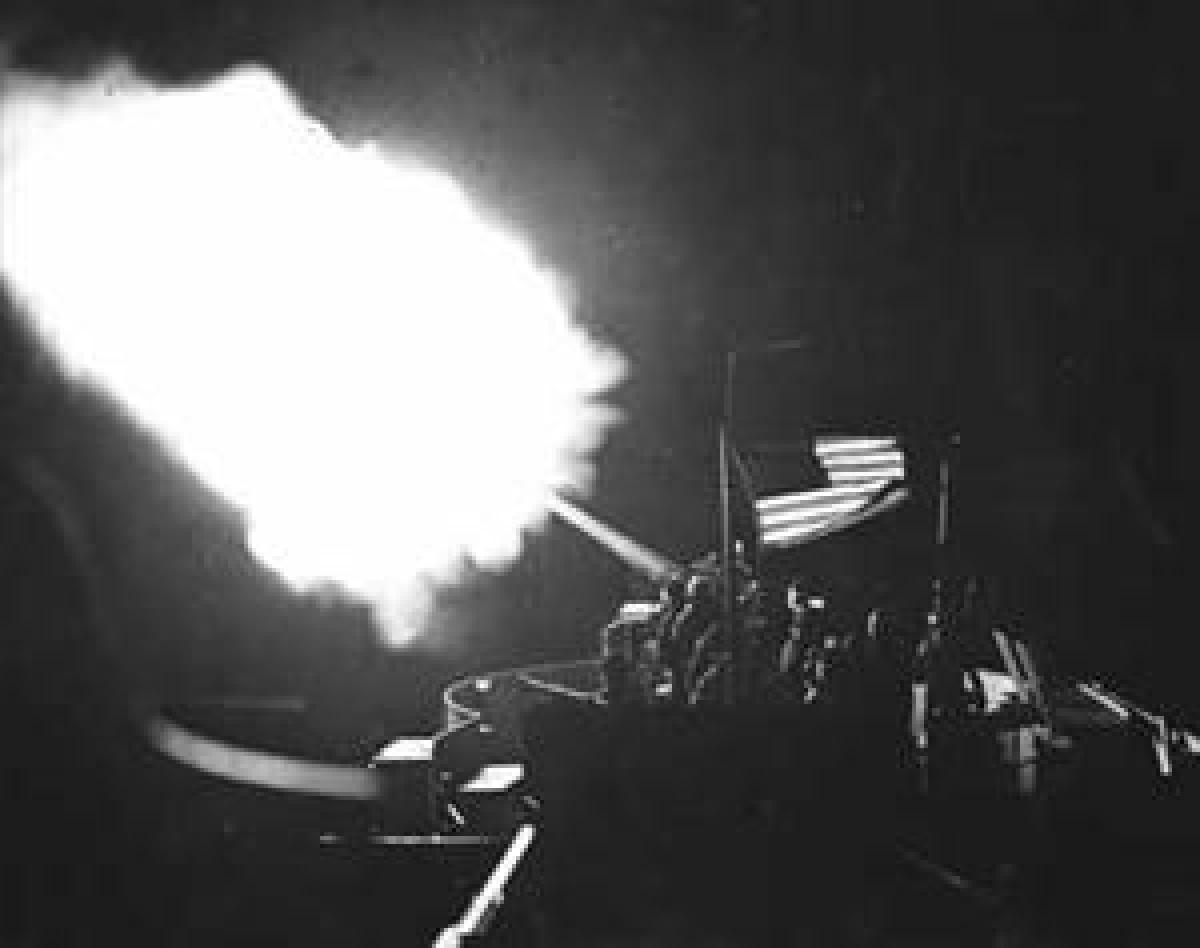Tin cans, greyhounds, or destroyers—by whatever name, these fast, deadly ships are among the most fascinating vessels in U.S. Navy history. In this issue, we highlight aspects of their service and explore their century-long evolution from limited-mission vessels to the most versatile ships in the U.S. fleet.
Our lead-off article is by one of the most talented and prestigious writers ever to appear in Naval History: John Steinbeck. Best known for his novels portraying the struggles of the downtrodden, Steinbeck spent several months in 1943 reporting on the war from England and the Mediterranean. He saw action during a two-week period in September 1943 when he was with Special Operations Task Group 80.4, a multinational unit that included the destroyer USS Knight (DD-633), a Dutch gunboat, and a Royal Navy motor torpedo boat flotilla. Steinbeck quickly became friends with the group's operations officer, Lieutenant Douglas Fairbanks Jr., U.S. Naval Reserve, and the author accompanied the actor on several swashbuckling adventures off the Italian coast. Steinbeck chronicled the task group's operations in heavily censored dispatches for the New York Herald Tribune, one of which is devoted to "the destroyer X” (the Knight) and her destroyermen and is featured in this issue.
David W. McComb, who brought the Steinbeck article to my attention, wrote two of our other destroyer articles. With “Indispensable in Every Operation,” Dave is able to skillfully cover the history of U.S. destroyers—from the Bainbridge class to the Arleigh Burkes—in a dozen pages. “Destroyers at Tokyo Bay” illuminates a relatively little-known chapter of destroyer history: the ships’ operations in conjunction with the official Japanese surrender on board the USS Missouri (BB-63). The final article in our tin-can package comes courtesy of the Naval Institute. It’s an except from Navy Rear Admiral Jackson K. Parker’s USNI oral history in which the destroyerman reminisces about the discomforts of life on board his first ship, the USS Mervine (DD-489), during World War II.
While a famous writer’s article leads off this issue of Naval History, an acclaimed early American poet’s verse is featured in another. In “The 'Horrors of These Hulks,’” Dr. Robert E. Cray recounts how during the Revolutionary War Philip Freneau used his formidable poetic talents to condemn Britain for the conditions on board its prison ships and to call attention to the fact that the prisoners who died in them were buried in haste and without ceremony.
Another article in this issue is sure to raise the eyebrows of some Marine readers. In it, Dr. James C. Bradford argues that during the early decades of the 20th century the U.S. Navy and the Marine Corps virtually ignored the study of expeditionary warfare. This article is the third paper Naval History has published from the 2005 Annapolis Naval History Symposium. Please check the Naval Institute’s Web site for updates on the 2006 history conference.
One final staffing note. For the past several years, Karen Eskew has been the person most responsible for ensuring that Naval History is gracefully designed and assembled and printed on time. After she departed the Naval Institute several weeks ago, we found her replacement in our own house. I’m happy to announce that Faith Stewart, formerly Naval History’s senior designer, has been promoted to director of design and production.
—Richard G. Latture, Editor-in-Chief





